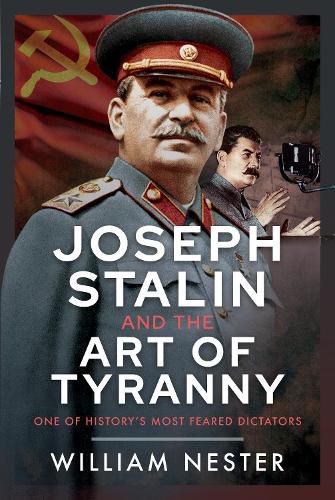Readings Newsletter
Become a Readings Member to make your shopping experience even easier.
Sign in or sign up for free!
You’re not far away from qualifying for FREE standard shipping within Australia
You’ve qualified for FREE standard shipping within Australia
The cart is loading…






Joseph Stalin and the Art of Tyranny examines authoritarian rule, revealing how tyrants sustain power through a mix of comfort, terror, love, and fear, often convincing their subjects of their divine purpose. Such leaders build systems of loyalists and subservient institutions, enabling unchecked authority. Joseph Stalin exemplifies this tyranny. As Soviet leader from 1929 to 1953, he implemented totalitarian policies, nationalizing industry and agriculture, controlling economic production through five-year plans, and eliminating dissent through imprisonment, forced labour, or execution. His brutal regime caused an estimated 20 million deaths. Despite this grim legacy, Stalin's reputation remains divisive. In Western democracies, he is remembered as a genocidal dictator, but in Russia he often ranks among the most admired historical figures, illustrating the paradox of his influence. Stalinism served as a model for Communist regimes in China, Vietnam, and Cuba, shaping their governance. While many of these nations transitioned toward democracy, countries like Russia, China, and North Korea continue to echo Stalinist practices. Modern leaders such as Saddam Hussein, Vladimir Putin, and Xi Jinping have adopted similar strategies of control. Joseph Stalin and the Art of Tyranny offers crucial insights into authoritarianism, revealing the enduring appeal and devastating impact of totalitarian rule. AUTHOR: Dr William Nester, a Professor at the Department of Government and Politics, St. John's University, New York, is the author of more than forty books on history and politics. His book George Rogers Clark: I Glory in War won the Army Historical Foundation's best biography award for 2013, and Titan: The Art of British Power in the Age of Revolution and Napoleon, won the New York Military Affairs Symposium's 2016 Arthur Goodzett Book Award. 16 b/w illustrations
$9.00 standard shipping within Australia
FREE standard shipping within Australia for orders over $100.00
Express & International shipping calculated at checkout
Joseph Stalin and the Art of Tyranny examines authoritarian rule, revealing how tyrants sustain power through a mix of comfort, terror, love, and fear, often convincing their subjects of their divine purpose. Such leaders build systems of loyalists and subservient institutions, enabling unchecked authority. Joseph Stalin exemplifies this tyranny. As Soviet leader from 1929 to 1953, he implemented totalitarian policies, nationalizing industry and agriculture, controlling economic production through five-year plans, and eliminating dissent through imprisonment, forced labour, or execution. His brutal regime caused an estimated 20 million deaths. Despite this grim legacy, Stalin's reputation remains divisive. In Western democracies, he is remembered as a genocidal dictator, but in Russia he often ranks among the most admired historical figures, illustrating the paradox of his influence. Stalinism served as a model for Communist regimes in China, Vietnam, and Cuba, shaping their governance. While many of these nations transitioned toward democracy, countries like Russia, China, and North Korea continue to echo Stalinist practices. Modern leaders such as Saddam Hussein, Vladimir Putin, and Xi Jinping have adopted similar strategies of control. Joseph Stalin and the Art of Tyranny offers crucial insights into authoritarianism, revealing the enduring appeal and devastating impact of totalitarian rule. AUTHOR: Dr William Nester, a Professor at the Department of Government and Politics, St. John's University, New York, is the author of more than forty books on history and politics. His book George Rogers Clark: I Glory in War won the Army Historical Foundation's best biography award for 2013, and Titan: The Art of British Power in the Age of Revolution and Napoleon, won the New York Military Affairs Symposium's 2016 Arthur Goodzett Book Award. 16 b/w illustrations